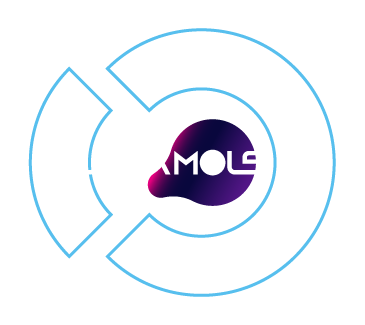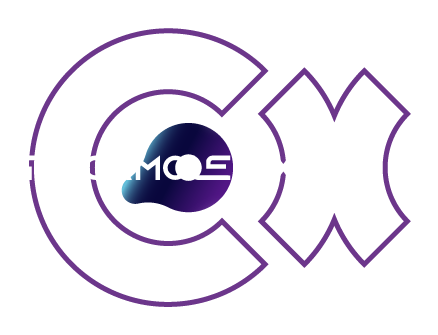Digitalization is the way many industries have made their services or documents easily accessible and available to their users, and healthcare is no exception. But it is coming with some drawbacks, too: cyber attacks and the need to protect sensitive data such as EHR (electronic health records) against data breaches and hacking attempts.
This has the industry wondering: how to prevent cyber attacks on healthcare?
For healthcare organizations, keeping medical records protected has always been a priority and a challenge, even before the advent of digitization. Having medical records online or on devices easily available both for staff and patients brings countless advantages to healthcare organizations. But the same makes them vulnerable to data breaches and ransomware attacks.
According to studies, healthcare is one of the most sensitive areas for cybercrime and ransomware attacks. The reason is simple: on the black market, personal health information (PHI) is more valuable than credit card credentials or even personally identifiable information (PII). Just to set an example, according to the Infosec Institute, credit card information can sell for $1-$2 on the black market, but PHI can sell for as much as $363.
Data breaches and ransomware attacks: Cybercrime at the heart of healthcare
According to Health IT Security, the healthcare industry accounts for 79% of all reported data breaches and the frequency is rising. In 2021 only, more than 40 million patient records were reported to be compromised. In fact, in 2021 a healthcare organization in Wisconsin reported an intrusion that resulted in unauthorized access to certain patient files and employee information. And just in the first six months of 2022, more than 19 million records were involved in healthcare data breaches.
Just to set an example, the Baptist Medical Center suffered a cyberattack in April 2022. Further investigation showed that a third party had accessed certain systems, and had removed data. This information included demographic data, Social Security numbers, health insurance information, EHR, and billing. As a consequence, The Baptist Medical Center enhanced its cybersecurity to minimize the risk of such incidents happening again. The question that the healthcare sector should analyze in detail is: what does it really mean to enhance cybersecurity? And of course, how to prevent cyber attacks in healthcare answering its very specific challenges and needs?
Healthcare and cybersecurity: the privacy and compliance challenges
In healthcare organizations, complex, diverse, and private information is accessed by many different professionals, which makes patient privacy vulnerable from numerous fronts. From the IT point of view, the challenge comes from protecting all these different types of information whenever and wherever this information needs to be consulted but also by whoever needs to do so. At the same time, the security solutions need to be compliant with national healthcare standards. So IT teams in the healthcare industry always swim between privacy and compliance challenges.
According to the HIPAA Journal’s Data Breach report, only in January 2022, fifty healthcare data breaches affecting over 500 patient records. So the need for cybersecurity solutions where data privacy is a major consideration is growing every day. In fact, information technology is already transforming the healthcare industry: Experts estimate that the healthcare information technology market could reach USD 390.7 bn by the end of 2024.
Touchless authentication technology to match the healthcare needs
A recent survey on how to prevent cyber attacks in healthcare showed that 30% of hospitals and health systems are planning to implement biometrics as a first option. This comes as no surprise, as biometrics, and especially facial biometrics allow touchless authentication mechanisms. In a working environment where the user is most of the time wearing a mask, or gloves or is in contact with viruses and fluids, touchless cybersecurity solutions come as the first answers.
Hand in hand with biometrics, there are two more cybersecurity concepts coming from other industries into healthcare as well: passwordless authentication, and zero trust architecture. The growing interest in passwordless authentication comes from healthcare organizations willing to reduce the security risks associated with passwords and human error when accessing devices and data. And zero trust architecture, whose starting point is not trusting any user or device, even if it is already connected to the network, comes as the perfect security approach to a safer cybersecurity model to prevent cyber attacks in healthcare.
Touchless authentication to protect EHR
Finding the balance between cybersecurity and workflow efficiency is a big challenge. User authentication and device access in healthcare must be convenient and automatic, two features that passwords cannot offer. Besides, the protection must be continuous to eliminate friction at log-in and extend along the session, with no gap for any intruder to stick in.
Touchless authentication based on facial biometrics is a powerful tool to make sure only authorized clinicians and staff have access to patient records or medical supplies. In fact, with facial biometrics only specific members of staff can access specific devices. So in the healthcare context of work, the appropriate cybersecurity solution is not only HIPAA and GDPR compliant, but it also:
- Provides easy and instant access to systems, devices, and records
- Eliminates contact with surfaces by being touchless
- Adopts an accurate and phishing-resistant key for secure authentication
- Provides continuous cybersecurity beyond login.
Touchless continuous authentication: adding an extra security layer for healthcare
Healthcare organizations have the possibility to adopt facial biometrics for their cybersecurity solutions and add an extra security layer by using it in combination with video. Opting for these kinds of cybersecurity solutions to prevent cyber attacks in healthcare, organizations add a very important feature to their touchless authentication technology: they make it continuous, expanding the protection of their EHR and networks beyond logging in and eliminating the need to log out. Cybersecurity solutions that use the camera on the device to track authorized users through video offer constant and nonstop tracking of whoever stands in front of the screen and tries to get access. This type of technology really matches the healthcare requirements because, if doctors and nurses work 24/7, so should the technology protect them and the data they handle.
Touchless continuous authentication can make a difference in the fight for security and against data breaches while improving the way healthcare practitioners can do their job. It not only strengthens their cybersecurity posture, but it also shows their patients they are a healthcare organization they can trust to keep them and their privacy secure.To learn more about touchless continuous authentication solutions for a healthcare visit us.
















